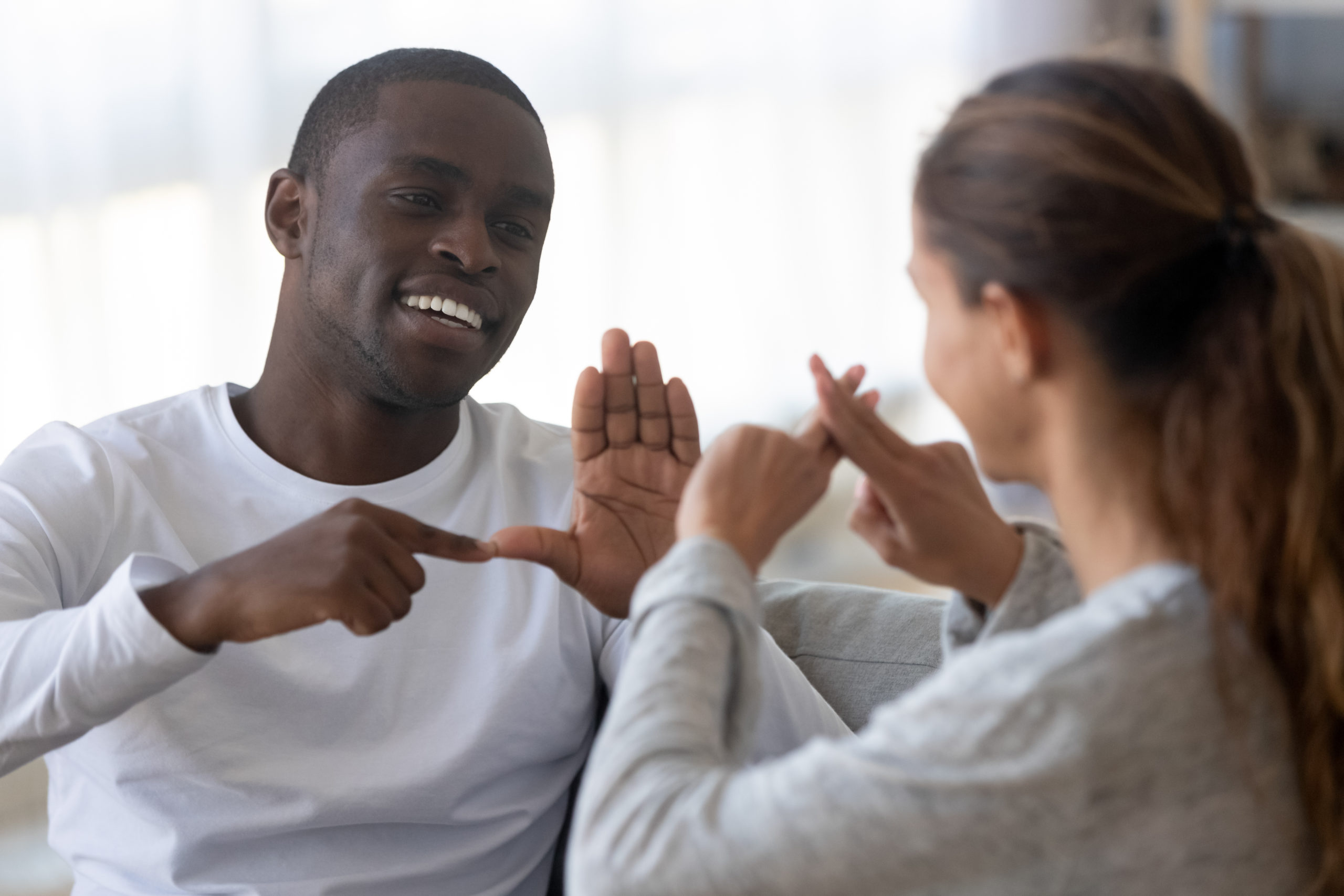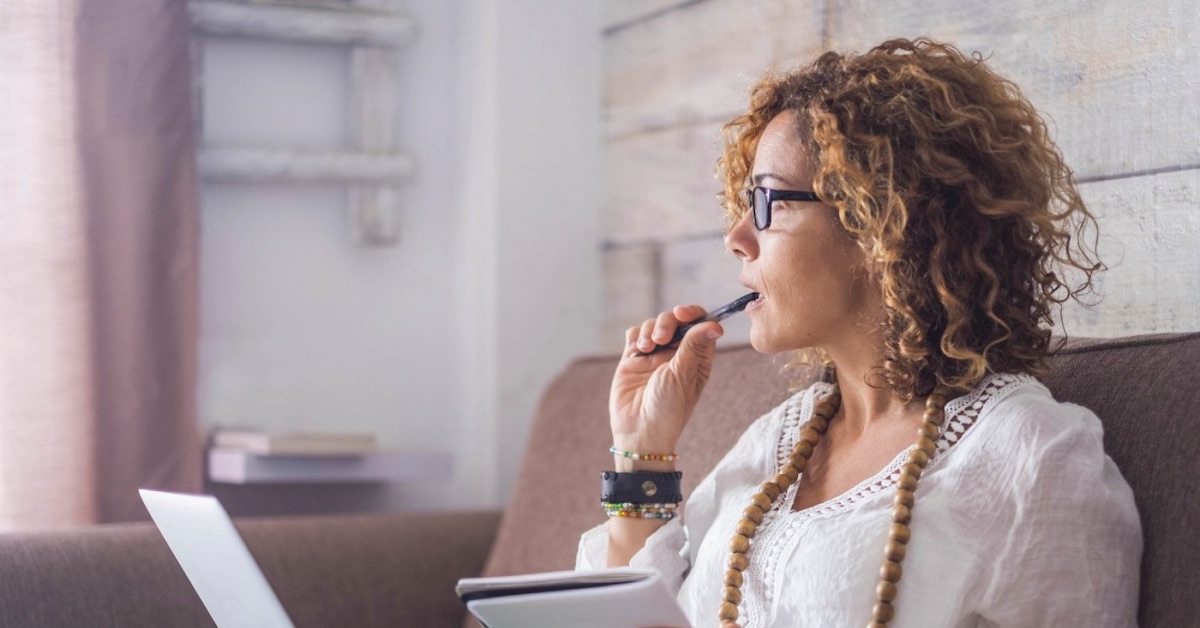Mental Health Advocacy and Equity for d/Deaf Patients

Gina Nepa, Senior PCP Clinical Liaison; Danielle Smith, Care Navigator; and Kate Panepinto, Provider Support Specialist
December 2, 2020
In consideration of the complexity of the d/Deaf identity, the deaf community will be referred to as “d/Deaf” to conceptualize deafness as both a medical condition (deaf) and a simultaneous “distinctive linguistic, cultural, and social identity” (Deafness). This framing to centralize autonomy is vital in the context of a history that has traditionally pathologized deafness, and reinforced notions of audism* in which “deaf people should struggle to be as much like hearing people as possible.”
History
ASL (American Sign Language) is a complete, natural language that has the same linguistic properties as spoken languages, with grammar that differs from English. ASL is expressed by movements of the hands and face. It is the primary language of many North Americans who are deaf and hard of hearing, and is used by many hearing people as well.
The origins of sign language can be traced back to at least 1714. Parts of the island of Martha’s Vineyard in Massachusetts were home to as high as 1 in 4 d/Deaf individuals. Island residents created a sign language which came to be known as Martha’s Vineyard Sign Language (MVSL). The language was used by d/Deaf and hearing members alike, and kept the island’s d/Deaf community fully engaged in island life. MVSL was one of the various “village sign languages” that, along with Old French Sign Language and home sign systems, were combined to form modern-day ASL.
Perhaps the most well-known individual with regards to d/Deaf education is Thomas Gallaudet. Gallaudet, alongside Laurent Clerc, founded the American School for the d/Deaf, the first educational institution in the United States for d/Deaf students. The school’s first class had 8 students, all of whom quickly learned the sign language Gallaudet and Clerc taught, and were able to communicate with others for the first time in their lives.
In 1864, Gallaudet founded the current-day Gallaudet University. Originally a grammar school for deaf and blind children, it was the first school for the advanced education of the deaf and hard of hearing in the world and today it remains the only higher education institution in which all programs and services are specifically designed to accommodate d/Deaf and hard of hearing students.
Although advances in language and education were being made, legislative tensions ensued in the late 1800s, with congressional representatives advocating for the use of oralism** rather than ASL, resulting in the ban of ASL in schools. In 1880, at the Second International Congress on Education of the Deaf, ASL advocates and d/Deaf community members were notoriously provided with just three hours to provide testimony of their lived experiences during these hearings, while external community members spoke for three days.
Although legal tensions regarding d/Deaf individuals continued for the next 100 years, the second half of the 20th century brought multiple advancements for the d/Deaf community. In 1964, the establishment of Video Relay Service allowed ASL users to communicate with telephone users via video equipment rather than typed text. PL 94-142 was passed in 1975, guaranteeing “free and appropriate public education” for children with disabilities, accompanying the 1973 Rehabilitation Act that forbade discrimination based on disability status within institutions that received federal funding. Although a historically and culturally significant piece of legislation, the scope of this bill did not require institutions at-large to prevent discrimination against people with disabilities. This need did not change until 1990 with the passing of the Americans with Disabilities Act. After the passing of the ADA, caption decoder chips were subsequently required in all televisions larger than 13 inches. Captioning requirements through other mediums have only recently started to be mandated, and universities continue to advocate for equitable funding for their ASL courses, with Harvard only offering credit for their ASL courses as recently as 2016.
Historically, legislative tensions have arisen following d/Deaf community members not being granted equitable decision-making power as that of hearing individuals. As we continue to witness greater social and legislative recognition of the need for improved accessibility for individuals who use ASL, we must continue to elevate the voices of these community members in all decision-making. As such, “we must recognize the legitimacy of sign language as a linguistic system and it should be accorded the same status as other languages.” This framework is crucial to creating effective accessibility models and promoting equity within healthcare spaces.
The mental health space is a particularly important context in which to centralize autonomy and dignity for these patients. The National Association of the Deaf (NAD) has taken a formal position of advocating for culturally affirmative and linguistically available services for the d/Deaf community. While it is often preferred and recommended that a person sees a mental health practitioner who is able to communicate in ASL, the NAD recognizes that is not always possible and recommends translators who have training in mental health settings. NAD also identifies telehealth appointments via video to be advantageous to the d/Deaf community and advocates for the input of the d/Deaf community at local, regional, and national levels.
*Per 1975 framing by Tom Humphries, audism can most succinctly be defined as “the notion that one is superior based on one’s ability to hear or behave in the manner of one who hears.”
**Oralism is “the system of teaching deaf people to communicate by the use of speech and lip-reading rather than sign language.”
Sources and Additional Resources
- Additional chronology of events impacting the d/Deaf community and comprehensive history
- Social justice and the d/Deaf community
- Audism
- National Association for the Deaf
- Deaf Counseling Center (nationally inclusive)
Explore more

Quality Mental Health Care, Wherever You Are
At Quartet, we know that mental health care isn’t one size fits all.

Take Your Own Advice: A Note to Therapists on Self Care During COVID‑19
COVID-19 added a layer of complexity for mental healthcare workers, who may be experiencing their own stressors and anxieties related to the crisis.

Fighting Two Pandemics: Supporting Domestic Violence Survivors and Their Mental Health Needs During COVID‑19
For some, following the stay-at-home orders for one pandemic may render them vulnerable to another: domestic violence.



